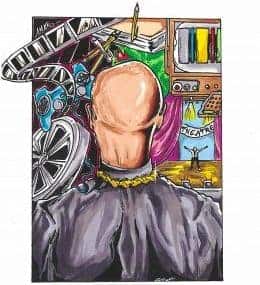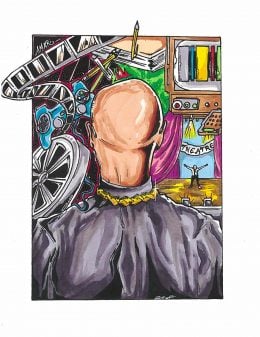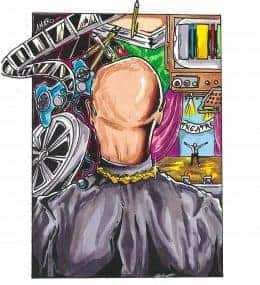Audrie & Daisy – Overview/ Review (with Spoilers)
Documentaries, usually, are not about happy topics. They are about exposing someone’s suffering, sometimes their triumphs, but rarely is the most empowering tales without the shock someone survived all they were put through. So is the case of Audrie and Daisy in which one didn’t survive all they went through. Trigger Warning(s): Rape Characters &…

Spoiler Alert: This summary and review contains spoilers.
Additionally, some images and text may include affiliate links, meaning we may earn a commission or receive products if you make a purchase.
Documentaries, usually, are not about happy topics. They are about exposing someone’s suffering, sometimes their triumphs, but rarely is the most empowering tales without the shock someone survived all they were put through. So is the case of Audrie and Daisy in which one didn’t survive all they went through.
Trigger Warning(s): Rape
Characters & Storyline
The main focus of the documentary are two girls. The first being Audrie who starts off the documentary and has the shorter of the two cases. Reason being, the only people alive to talk about what happened are those who assaulted her, her friend, and her family members. Unfortunately, after a week of trying to find answers and get justice, Audrie killed herself.
With Daisy, though, while she attempted to commit suicide like Audrie, after her assault, between her brother and mother, they were able to, countless times, keep her from death. But so remained an incident which literally tore local public opinion in two. With Daisy living, she found herself in hell. People trying to place the blame on her and not just her fellow high school students, but adults. People who were in positions of power who, even in the documentary, question why the boys get all the weight of the blame and she gets none.
So, needless to say, prepare yourself for some very strong feelings while watching this.
Highlights
Understanding Why Women and Girls Don’t Report Their Assault
As hopefully is understood, rape is a very long term crime. It isn’t just the act in itself that does the damage, but then the stigma which comes thereafter and also the psychological effects. Someone took your right to autonomy, they were involuntarily inside you and even if you were unconscious, knowing what happened while you weren’t present is still something you have to live with.
But as shown in The Invisible War, being a survivor isn’t just a few bandages and pain medication. It forever alters how you approach people, how you allow them to approach you, and also how intimacy plays a role in your life. Refocusing on Daisy and the rest of the young women of the film, with them you also got to put into play social media.
We live in a world where images and videos which find their way on the internet never die. You can delete them but if someone already downloaded them off Google made a cache of the image, it still lives. On top of that, we have things like Facebook, Twitter, Tumblr, and a slew of other platforms where for years you have liked, reblogged and expressed your personal opinion. All of that can be used against you as people question the validity of your claims. Not to forget, with anonymity still a possibility online, you have strangers, people who only vaguely know your story, attacking you, telling you to go kill yourself and speaking as if they have something to lose in you just getting your rapist to admit what they did.
And we watch Daisy go through all that. We see the transcripts and videos of her parents and Audrie’s just trying to get some sort of admittance of guilt. Yet, it takes months just for the case to perhaps reach trial. During that time, you are dealing with the court of public opinion. Then, in the case of Daisy, depending on local laws, if there isn’t enough evidence then the prosecutor may drop the case. Making it seem, in the eyes of the law, what happened to you wasn’t significant enough to pursue. You basically have to decide whether to move on or push your case further up the ladder. Which, though not mentioned in the movie, likely can be very expensive and time-consuming. Nevermind, as seen, the pursuit of justice can be dangerous to the well-being and safety of the victim and their family.
The Animations Painted A Vivid Picture
Let me note the animations don’t depict the assaults, but they do provide the feeling of being in the room while the crime was going down. Leading to goosebumps and the desire to cry as you get into the mindset of either Audrie or Daisy.
On The Fence
Audrie’s Story Felt Like a “What If” To Daisy’s Story
I feel so horrible saying this, and hope it doesn’t come out wrong, but, to me, Daisy’s story felt like it was built off the back of Audrie’s. To explain that statement, Audrie’s story is but a fraction of Daisy’s. We meet her parents, the two who committed the crime, go through what happened, and then we switch to Daisy and spend an enormous of time with her. To the point it seemed like Audrie’s story was there to prepare you for Daisy’s. A sort of, if Daisy’s brother or mother didn’t make it in time, she would have died just like Audrie. Making Audrie the tragic tale which opens for Daisy’s tale of attempting suicide but eventually coming to a point where she learned ways to cope and move on, in some form.
Overall: Positive (Worth Seeing) – Recommended
While Daisy and Audrie’s story being in the same documentary I don’t think was the best idea, it doesn’t lessen the impact of both of their stories and what they ultimately represent. Both in terms of the social aspect of what survivors go through but also the legal aspect of them getting justice. Which is why I’m marking this as Positive (Worth Seeing) and adding the recommended label. I would like to that people are becoming more aware of what rape and consent are, but I don’t think people fully understand the impact it has on a person. It’s pretty much every crime you can think of put into one act. Yet, still, there are those who get slaps on the wrist while they caused irreparable physical and mental trauma to someone. To the point where they are afraid to speak and expedite the process of taking what happened to their grave.


